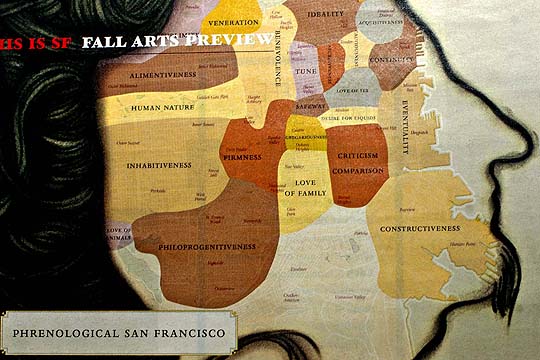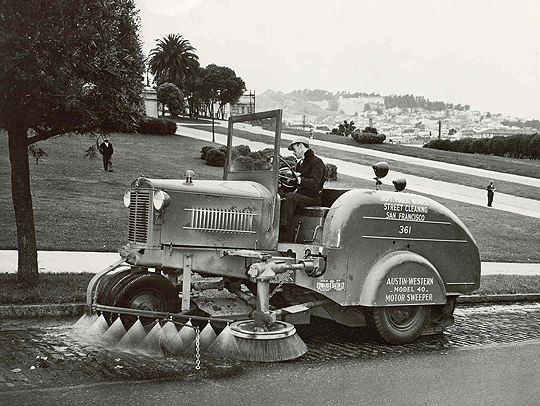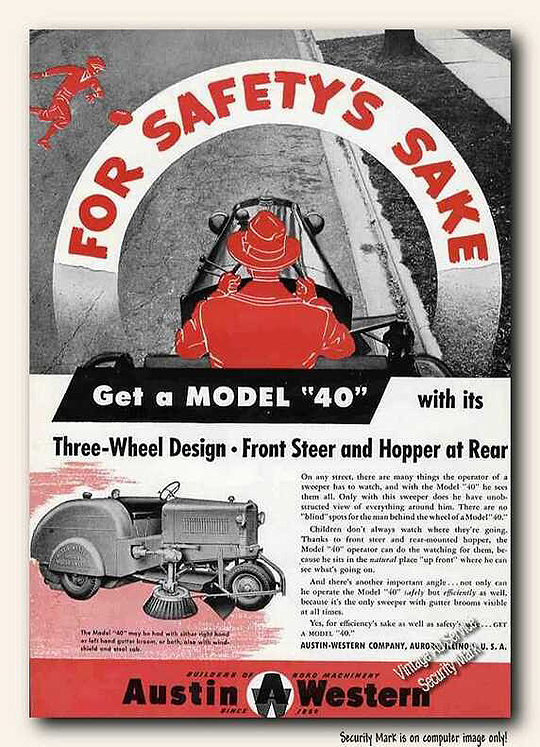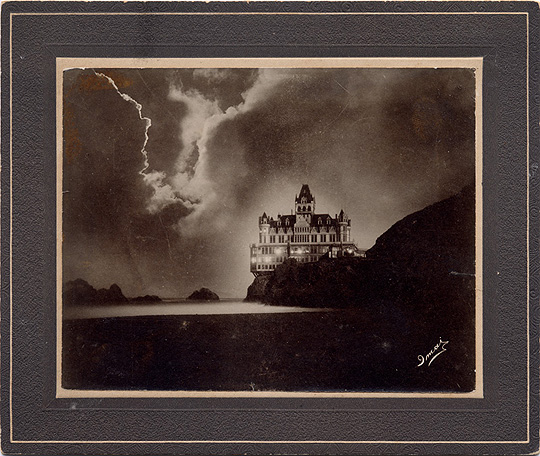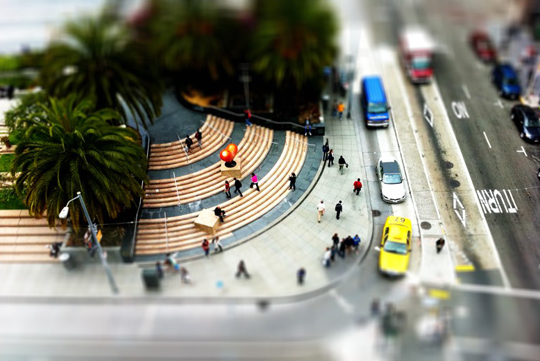Last week I posted some photos by Seymour Snaer from 1939, a couple of which were of Sally Rand’s Nude Ranch from the Golden Gate International Exposition that took place on Treasure Island. Rand is worth a closer look, if you know what I mean. Take a peep after the jump…
Continue reading Sally Rand in 1933: Unfair to Nudism! (NSFW)
Blog
Photos of San Francisco in 1939

1939 was a big year for San Francisco, during which it attempted to convince the world that it had fully recovered from the catastrophes of 1906 and was once again a city to be reckoned with. Completion of the Bay Bridge and the Golden Gate Bridge was punctuated with the International Exhibition on Treasure Island.
For one photographer/photojournalist, that year left a lasting impression.
The photographer’s name is Seymour Snaer, and the images were published in 1980 in a book titled, San Francisco 1939: An Intimate Photographic Portrait. Snaer had over 100 rolls of film from that one year, so publisher Bill Owens reprinted select shots from negatives, rescuing them from the bad cropping done by newspapers like the Examiner, who Snaer had worked for.
I’ve Googled around and not found much mention of the man, nor have I seen any of his images. The (used) book is listed on some sites, but none even have the cover image (above).
I’m including just some of the photos (in low-res format taken with my camera), and the captions that go with them. Additionally, I’ve excerpted some text from the body of the book. The writing has a raw feel to it; you can tell it was written by someone who doesn’t write, but really has something to say.
Some of the highlights: Real fishermen using nets in the Bay; Belt and Southern Pacific trains; view from Twin Peaks; Sally Rand’s Nude Ranch (NSFW); ski jumping on Treasure Island; auto polo.
Tip of the hat to Jonathan at Viracocha for gifting the book to me (that was a very kind way to get me to stop bugging you about your fantastic shop).
The above image is from the cover, portraying still and movie photographers capturing President Franklin Roosevelt’s motorcade who came to see the Expo before it opened, in ’38. Snaer writes:
Two of the guys in the bunch were very famous newsreel cameramen in the ’30s, Joe Rucker and Frank Vail. They used hand-crank cameras … I had big bulbs and all of a sudden – a bulb exploded! Secret Servicemen ran all over the place. It really embarrassed me. [p. 24]
The following images and text are all directly from the book. (Keep in mind that when he says “today,” Snaer means 1980.)
Note: I’m pretty sure the copyright, originally reserved by Snaer himself, isn’t being actively enforced, but in case it is, I’m only posting low-res images, and will gladly remove them if a rights-holder contacts me. Check out the photos/text after the jump…
Continue reading Photos of San Francisco in 1939
7×7 Can Do No Right When it Comes to Maps
A post at the San Francisco Citizen blog finds no credit for the above map in the print version of 7×7’s current magazine – and suspects it might have something to do with the fracas over this thing.
Indeed, I couldn’t find a version of the map on 7×7’s website, which is odd. But I’m gonna give them a pass because this new map is pretty cool on a couple of fronts.
First, it’s bizarre enough to be interesting – the descriptions applied to the various parts of town are an exercise in willful non-sequiter.
But best of all is its use of actual phrenological terms (philoprogenitiveness? C’mon!), and the probable inadvertent nod to our new favorite historical eccentric, Frederick Coombs, a.k.a., George Washington the Second.
Even before he went Cocoa for coo-coo puffs, Coombs wrote and self-published a book on phrenology called Popular Phrenology: Exhibiting the Exact Phrenological Admeasurements of Above Fifty Distinguished and Extraordinary Personages, of Both Sexes with Skulls of the Various Nations of the World. You can’t do much better than that in the “pseudoscience as prelude to insanity” department.
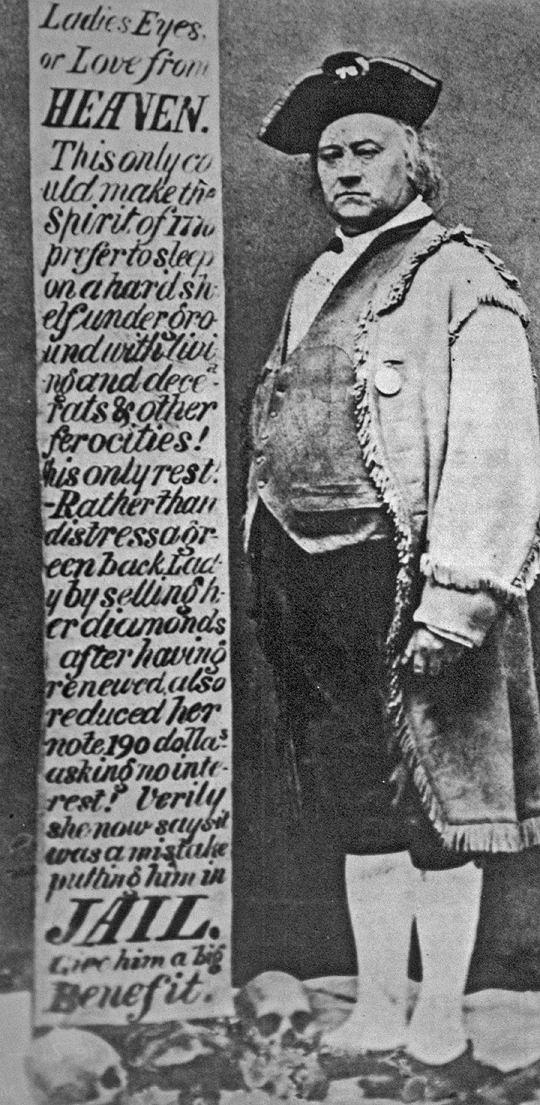
Note the skulls. Awesome.
So, hats off to 7×7. (They do lose points, however, for the offensive profile of the goateed hippie that defines the edge of the map.)
Emperor Norton vs. George Washington the Second
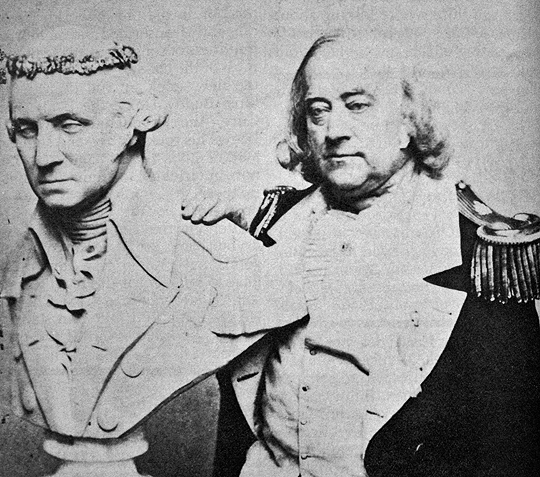
George Washington the Second beside a bust of his namesake. (I think he looks more like Ben Franklin.) Image courtesy San Francisco Public Library.
His Imperial Majesty, Emperor Norton I, in addition to being the prototype of Frank Chu, is credited with visions of a suspension bridge across the Golden Gate (some suspect this to have been made up by others later) and a tunnel toward Oakland before those ideas were considered sane.
There were other eccentrics who paraded San Francisco’s streets in the 1850s and 60s, but for some reason the only one we still celebrate is Norton. It is a monopoly that he, above all, would have cherished; but just like his attempt to corner the rice market in 1852 which eventually sent him over the rainbow, this monopoly may not last.
Submitted for your approval: Frederick Coombs, a.k.a., “George Washington the Second.” Learn all about him after the jump…
Continue reading Emperor Norton vs. George Washington the Second
Your Anti-Pigeon Wires are Wonderful…

…for me to poop on!
(Spotted@ 16th/Mission BART.)
Mayhem on the Streets of San Francisco
I know squonk about video games, but apparently there are expectations that the new San Francisco edition of this languishing franchise will revive its cred:
Driver: San Francisco takes the long-running yet languishing Driver series back to its purest, most French Connection-y roots, and introduces several new game mechanics, hundreds of licensed vehicles and plenty of graphical improvements to bring the game up to speed with other next-gen racing titles.
It sure looks beautiful. I dig the Seventiesploitation soundtrack and, naturally, the locations (don’t you miss the old Muni shelters?):
The Week on Twitter, 2010-08-20
- My brain has been Shangaied! http://bit.ly/9hx28N #
- Loss of a neighborhood Institution. RT @haighteration: Breaking: Lower Haight's Burger Joint to Close http://bit.ly/cuZS06 #
- Need lettuce for your anti-aircraft guns? http://bit.ly/bIeWHH #
- Dear followers, sorry for the "Twifficiency score" update – I was taken in. (Hope this doesn't lower my Twifficiency score!" #
- I just earned the Created 100 Spots Pin on @gowalla! http://gowal.la/r/23zxJ #
Fire Boat
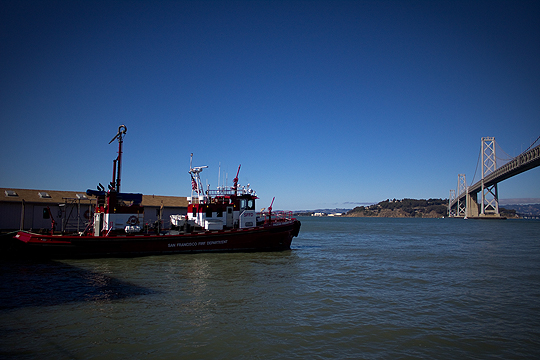
Parked at the SF Fire Department Museum, Pier 22 1/2. See it in higher-res at the Spots Unknown Flickr Pool.
Need Lettuce for Your Anti-Aircraft Guns?
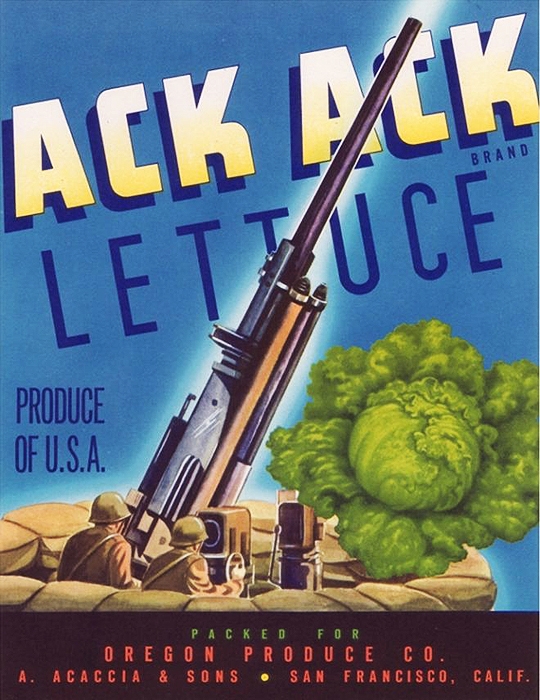
A. Acaccia & Sons has got all your leafy-wartime needs covered.
Huge Ships, Tiny Ships, Polar Bears
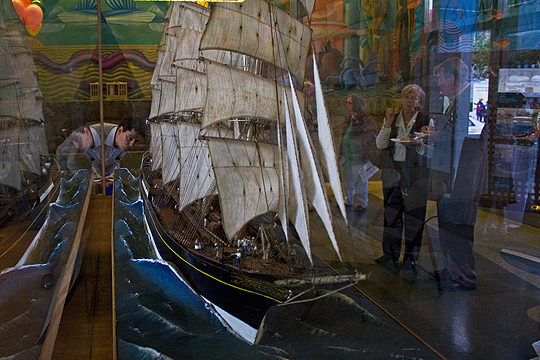
On Thursday, I attended the San Francisco Maritime National Park Association’s 60th birthday bash. I’m a new member, and so I’m just beginning to learn about this little gem, and the maritime history of SF.
The park includes that bad-ass ship you see at Hyde Street Pier (in the photo at the bottom of this post), a submarine you can go into, and a museum in the art deco building at Aquatic Park with jaw-dropping ship models and other miniaturizations.
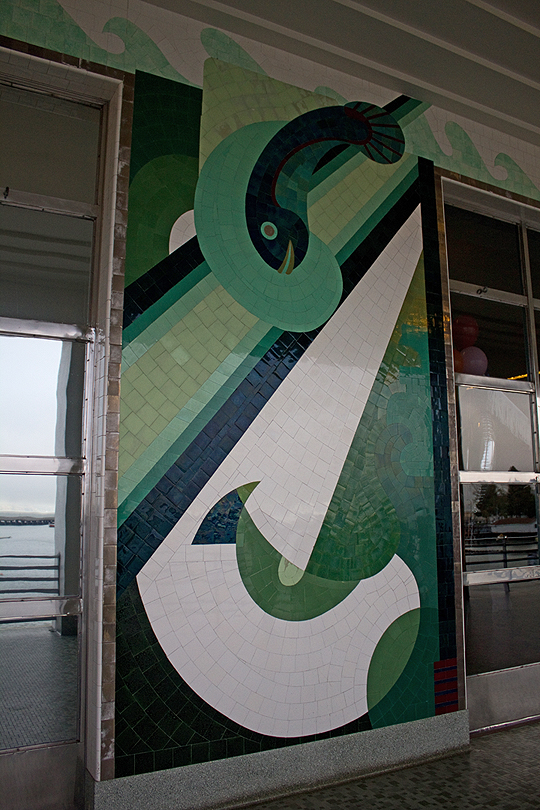
The inside and outside of the Aquatic Park Bathhouse Building are covered with awesome WPA-era murals and mosaics.
Learn all about the association and the park here.
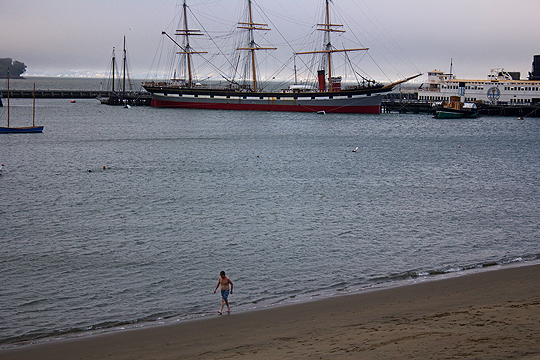
Beware: Polar Bears often swim in adjacent Aquatic Park, so if you’re sensitive to seeing half-naked old guys who like to maximize “shrinkage,” look away – ooh, what a pretty ship!
The Week on Twitter, 2010-08-13
- Tilt-shift photos of Union Square created to promote "Camera+" iPhone app. http://bit.ly/9wIvrQ #
- Cliff House "lightning" photo – the photog witnessed police shoot a man about to burn in '06 quake fire. http://bit.ly/cmwlHR #
- Hipster-proof street sweeper cleans Dolo Park, circa 1950. http://bit.ly/cWLq3q #
Sweet Vintage Street Sweeper, circa 1950
This beauty of a machine is shown cleaning the street at Dolores Park, which apparently even back then was regularly trashed by hordes of Missionites. (If anyone knows the origins of this photograph please drop it in the comments so I can properly attribute. I found it here.)
You can buy a vintage ad for the Austin-Western “Model 40” on eBay (and, really, why not?):
Here’s the ad copy:
On any street, there are many things the operator of a sweeper has to watch, and with the model “40” he sees them all. Only with this sweeper does he have unobstructed view of everything around him. There are no “blind” spots for the man behind the wheel of a model “40.”
Children don’t always watch where they’re going. Thanks to front steer and rear-mounted hopper, the model “40” operator can do the watching for them, because he sits in the natural place “up front” where he can see what’s going on.
And there’s another important angle… Not only can he operate Model “40” safely but efficiently as well, because it’s the only sweeper with gutter brooms visible at all times.
Yes, for efficiency’s sake as well as safety’s sake… GET A MODEL “40.”
Let the “hipster-proof” jokes commence…
Full Story Behind Cliff House “Lightning” Photograph
It’s one of the most famous San Francisco images, seen on postcards galore. I never realized what an epic story is attached to it and the photographer who is believed to have shot it. (Also, it’s not lightning, nor a storm, as is commonly held.)
According to this Cliff House book project site, on the back of the original print is the following inscription (neither dated nor verified):
A Japanese boy, noticing the approach of lightning and thunder storm, took the last car for the Cliff House at 10:30 p.m.
The night was dark. He took up his position with his camera on the beach, and patiently waiting until 2 o’clock a.m., was able by leaving his camera open to obtain this picture, the “flashlight” being Nature’s own–the bright strokes of lightning at the moment. The patience of the “Oriental,” together with his keen preception of the opportunity, give us this photographic rarity, thunder storms and lightning being a rare occurance in the “glorious climate of California.” –Copyrighted.
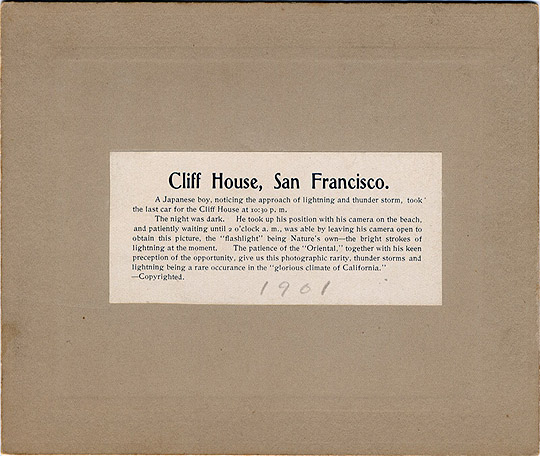
There’s more. The “Alamo Square Neighborhood Association Newsletter” from February 2000 identifies (via his son, “Ted”) the Japanese boy as Tsunekichi Imai.
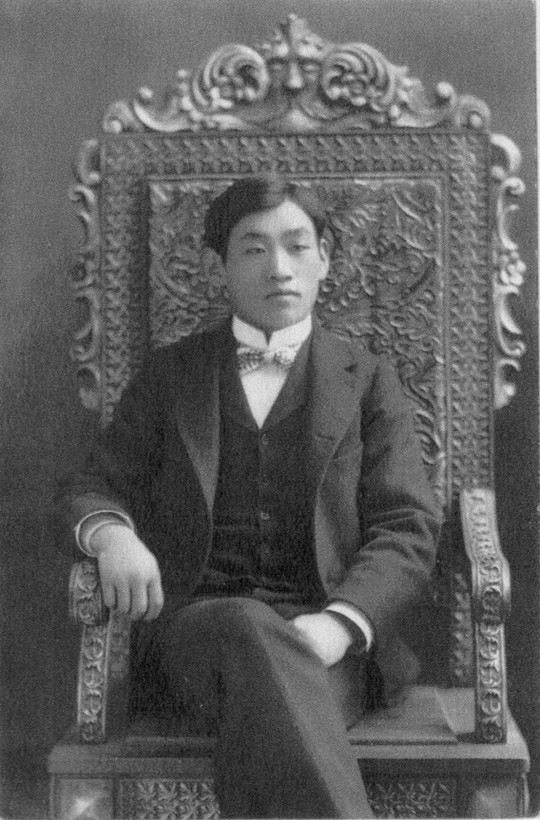
Scan courtesy of Winston Montgomery
The following story is included in a detailed account of Imai’s life:
Tsunekichi Imai was working in his Polk Street studio when the 1906 earthquake struck, and he described to his family how the pictures hanging from his shop walls shook and gyrated wildly, many tumbling to the ground. In the days that followed, the rapidly spreading fire which followed the quake overwhelmed firefighters and threatened to destroy the entire city. To stop the fire by depriving it of fuel, officials decided to create a firebreak by dynamiting a swath of buildings east of Van Ness Avenue. The Imai studio was located in one of these buildings.
The structures to be exploded were evacuated hurriedly and Tsunekichi Imai thought that all his equipment and furniture had been lost. Someone suggested that he go up to Lafayette Park at Washington and Laguna streets, and there he discovered stacks of personal possessions and household furnishings covered by tarpaulins that firemen and other volunteers must have rescued from the doomed buildings. He found most of the things from his shop piled together and even labeled with his name. Ironically many of the photographs and other personal affects that survived the earthquake and fire were lost during the period that the Imai family was interned during W.W. II at Camp Topaz in Utah.
Tsunekichi Imai took a number of photographs in the earthquake’s aftermath, the most notable, according to his son, Ted, showed a man trapped on the upper balcony of a burning building pleading for help as the flames engulfed him. The picture was taken just as soldiers on the ground shot the man with their rifles to put him out of his misery. Ted says his father was fearful of the possible legal implications of taking this photo or even witnessing this event, and eventually destroyed it.
Read the whole thing.
Tons more photos of Cliff House here.
Tilted and Shifted
I’m still a big sucker for this effect, when it’s well-done. These shots of Union Square were created to promote an iPhone app.
The Week on Twitter, 2010-07-23
- A quick crawl down the bluff at Land's End. http://bit.ly/bY5K2d #
- CG Jung, the Birth Trauma, and San Francisco during the Gold Rush. http://bit.ly/cQjGfT #
- I just earned the Wayfarer Pin on @gowalla! http://gowal.la/r/Uw5i #
When Montgomery Street was Waterfront Property
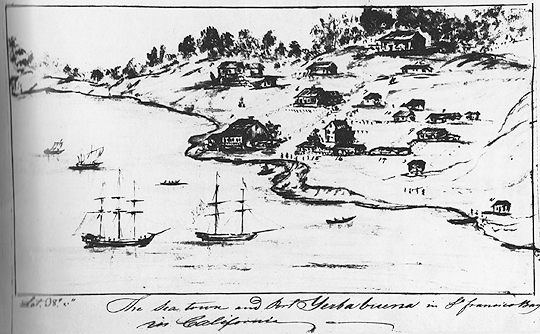
Yerba Buena settlement in the early 1840s, from the Society of California Pioneers
I’m kind of a big Carl Jung guy. Not so much because I think he was right about stuff in the scientific sense, but more due to an aesthetic attachment. I like that he went up against Freud (although I like that dude, too) and was willing to face ejection from the Vienna Psychoanalytic Society for it. Synchronicity. Archetypes. Individuation. Meyers-Briggs. Maybe I like these things because they’re not scientific.
And even though I never really bought into his idea of the collective unconscious, I was nonetheless intrigued by the stated thesis of Charles A Fracchia’s new book about San Francisco history, When the Water Came Up to Montgomery Street. He had me invested from the introduction:
I have maintained for some years that San Francisco’s history – to our present time – is compounded from the Gold Rush experience, that its distinctive – one might say unique – urban response is situated in what Jung called the collective consciousness… A city that prides itself in its cosmopolitan features, its tolerance, and its penchant for inclusivity, San Francisco continues to operate based on an ethos that was created during the Gold Rush, when the city was composed of a melange of races and nationalities who had simultaneously arrived in the city, producing a melting pot of customs, religious practices, socio-economic and regional differences, and forcing, more or less, a “live-and-let-live” environment.
The difficulties involved in being a resident of San Francisco during the Gold Rush were no less than a birth trauma as Fracchia puts it, an experience that, while not remembered by the matured being, nonetheless is a form of distress as formative as any other in explaining the being’s development.
I don’t know if Fracchia is familiar with another of Freud’s ultimately purged peers, Otto Rank, but his theory of the birth trauma would have been an even better metaphor for explaining “San Francisco values” than Jung’s collective unconscious.
In any case, the book doesn’t really attempt to use the concretes of the Gold Rush to support the thesis Fracchia clearly states in the introduction. I don’t think there is any further mention of the thesis, in fact, and instead his histories all point to the suddenness of SF’s transformation from a trading outpost to a metropolis. I suspect this is related to his statement at the end of the introduction that his thesis isn’t “empirically provable.” Don’t get me wrong, it’s a great read, and the photos and illustrations are fantastic. But the book leaves Jung, the collective consciousness, and the birth trauma on the roadside early on, and I wish it hadn’t.
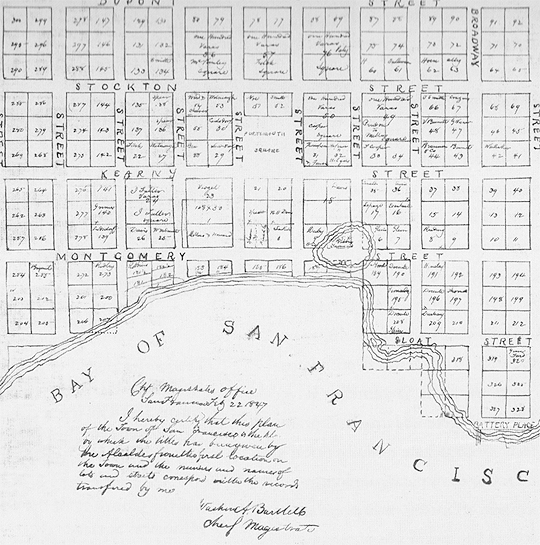
The Bartlett Map of San Francisco, from the Beinecke Rare Books and Manuscripts Library, Yale University
The dominant impression the book left on me is one implied in its title. The focus on Yerba Buena Cove, and especially the multiplicity of images of the original eastern edge of the peninsula, has given me the feeling that I know how that part of the city has changed since it was called “Yerba Buena.” Do I really? That’s impossible to prove empirically.
Low-res images in this post were scanned from Charles A. Fracchia’s When the Water Came Up to Montgomery Street.
The Week on Twitter, 2010-07-16
- I'm doing the SF City Guides' free tour of historic Fort Mason today. http://bit.ly/a83bx3 #
- He's on a boat! http://bit.ly/aKkirt #
Hazardous Cliffs Stay Back
Be sure to watch to the end for some sweet irony.
He’s on a Boat!
He scoffs at your fancy, non-arm-powered vessels. Yes it’s true, the new technologies of sail and engine allow you to “go places” and “move things,” but that’s exactly the point. He doesn’t play your games. His is an enlightened existence. All he needs is a sunny day. And a bottle of water.
The Week on Twitter, 2010-07-09
- Awesome SF tweet of the day from @aykay_: A big GFY to some of the idiots that reside in San Francisco. Can't stand this place. #
- Racist map of San Francisco? http://bit.ly/c3yjwU #
- The Wiggle and some time lapse of Church/Duboce. http://bit.ly/97Opyr #
- I'm glad someone still goes through the trouble to set off illegal fireworks. http://bit.ly/cF68r3 #
- Coffee or beer? #
- Guns & yoga. http://bit.ly/9DaJGP #
- RT @sfmsr: Muni service increases will bring the rarest of the streetcars to the Castro. http://streetcar.org/b/727 #
- Target's awesome logic for a San Francisco location: "People need to recognize that economic activity is a plus." http://bit.ly/bwKB19 #
